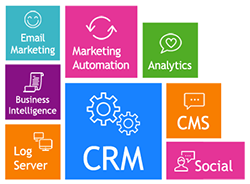This is article #42 out of 50 in The Startup Marketing Playbook.
With the right tools and technology, marketing effectiveness can easily be measured. Gone are the days of “50% of your marketing is working, you just don’t know which half.” In this series, I’ve outlined some of the top metrics that B2B startups need to account for when measuring marketing. However, those metrics don’t mean much unless stakeholders from marketing, sales and leadership can easily access them and draw conclusions. To make that happen, you need to build dashboards.
Your marketing automation system is typically the tool used to create and view dashboards. As you are getting an initial view of your marketing metrics set up, consider the following:
1. Configure in the marketing automation system, CRM or BI tool
Build your dashboards using the reporting tools in the marketing automation system (e.g. Hubspot), CRM (e.g. Salesforce) or business intelligence (BI) tool (e.g. Birst). Typically this tool is pretty straightforward to use. Here is what Hubspot looks like:

